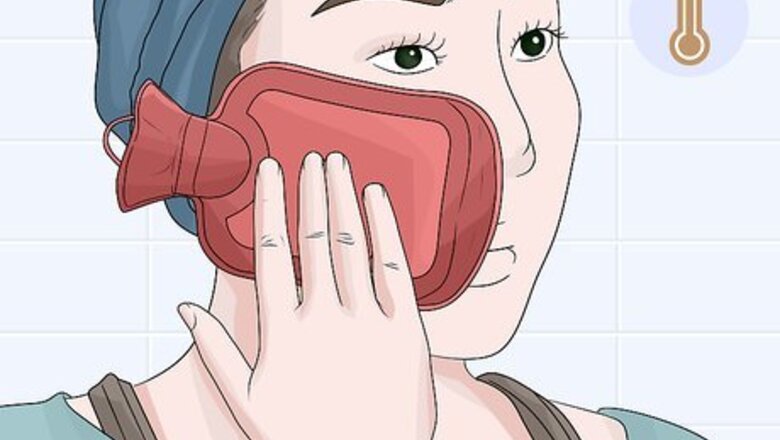
views
X
Trustworthy Source
Cleveland Clinic
Educational website from one of the world's leading hospitals
Go to source
Applying Essential Oils and Herbal Treatments
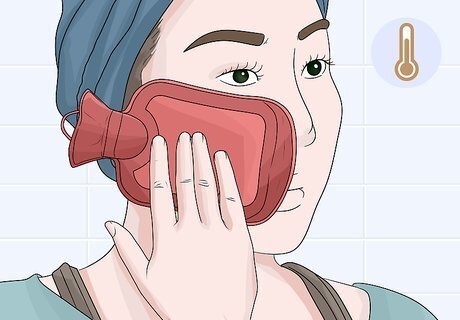
Use a warm compress on the cyst. Before you put any essential oils or herbal remedies on the cyst, you should warm up the cyst and encourage it to come closer to the surface. You can do this by applying a warm wet cloth to the cyst for 10-15 minutes. The compress should be warm but not boiling hot, just warmer than the temperature of your skin. Repeat this process every couple of hours. It will help to bring blood and infection-fighting white blood cells to the source, in addition to keeping the skin soft so that it can drain. The compress will also keep the area around the cyst clean and better prepare the cyst for the herbal remedies.
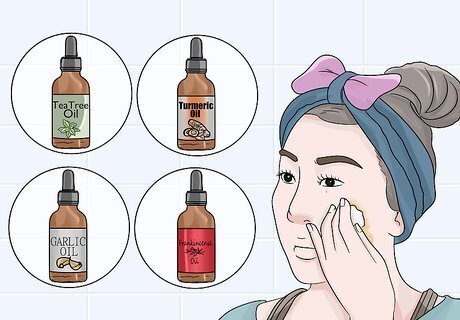
Apply essential oils with a cotton ball or a Q-tip. You can apply essential oils such as tea tree oil directly onto the cyst with a cotton ball or a Q-tip. This may have anti-inflammatory and antimicrobial properties. They may possibly help to reduce any swelling around the cyst and lower the risk of infection. You should only use one essential oil or herbal product at a time, especially if you've never used them before. That way, if your skin gets irritated or you develop an allergy, you will know exactly which oil has caused the problem. If you have sensitive skin, you can mix the essential oil with castor oil, using three parts essential oil to seven parts castor oil. Apply the essential oil to the cyst four times a day and cover the cyst with a bandage after you have applied the oil.
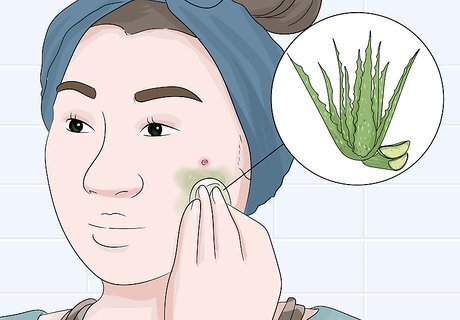
Put aloe vera on the cyst. Aloe vera has anti-inflammatory properties and can help to speed up healing. You can put the aloe vera directly on the cyst and then let it dry. You can find aloe vera at your local health food store or in the beauty section of your local grocery store.
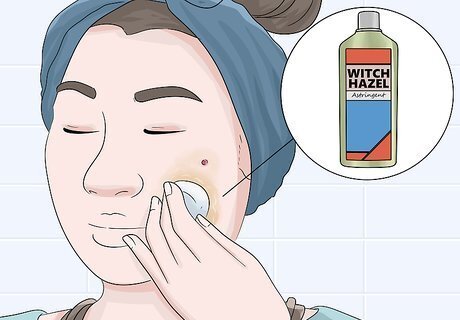
Try witch hazel on the cyst. Witch hazel has astringent qualities, which may help to dry out the cyst. Apply a small amount of witch hazel on a cotton ball or a Q-tip and apply it to the cyst. You can find witch hazel at your local health food store or online.

Dry out the cyst with apple cider vinegar. Apple cider vinegar has acidic properties that can help to dry out the cyst. If you have sensitive skin or it stings when you apply the vinegar, you can dilute the vinegar with one part water to one part apple cider vinegar. Apple cider vinegar can be found at your local health food store. Look for organic apple cider vinegar.
Using Ointments
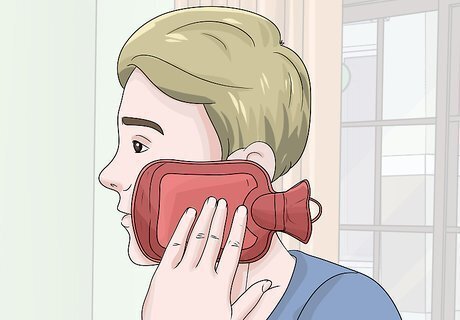
Apply a warm compress to the cyst. Before you apply any ointments or salves on the cyst, warm it up and encourage it to come closer to the surface by applying a warm wet cloth to the cyst for 10-15 minutes. Check that the compress is warm but not boiling hot, just warmer than the temperature of your skin. The compress will also keep the area around the cyst clean and better prepare the cyst for the herbal remedies.
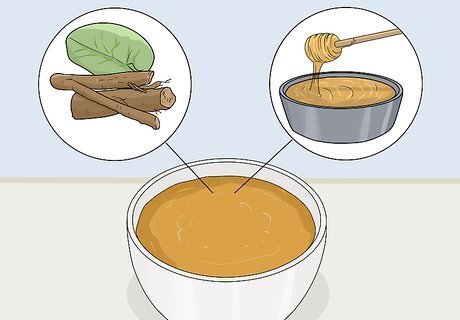
Make a burdock root ointment. Dry burdock root has been known to help draw out the liquid in cysts. Make a burdock root ointment by combining ½ teaspoon dried burdock root with 1 tablespoon of honey. The honey is antimicrobial and will also help to bring out the liquid in the cyst. Apply the burdock root ointment to the cyst with a clean finger. Do not use burdock root if you are pregnant or nursing.
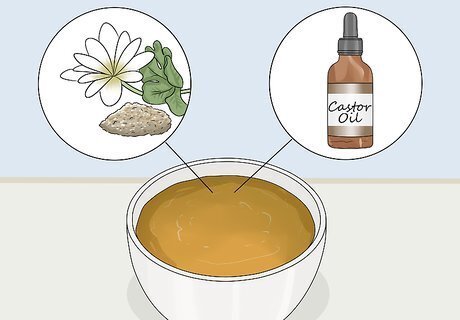
Try a bloodroot salve. Bloodroot, or sanguinaria canadensis, has been used in traditional Native American medicine to treat skin disorders. However, the effectiveness of bloodroot has not been independently verified by clinical studies. Combine ⅛ teaspoon bloodroot powder with 2 tablespoons of castor oil. Apply the salve to the cyst with a Q-tip. Never use bloodroot salve on any broken or cut skin and use only a small amount at a time. Do not ingest bloodroot or use bloodroot around your eyes or mouth. You should also never apply bloodroot around your genitals.
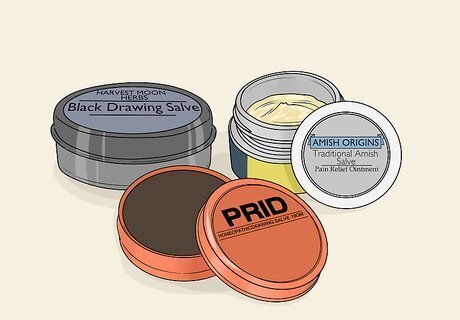
Use commercial salves. You can find commercial salves over the counter at your local drugstore or online. Follow the manufacturer’s instructions and only use the salve on cysts that are on the surface of your skin. Try PRID, a homeopathic salve that can used to “pull out” splinters, infections, cysts, and to reduce swelling on the skin. Do not use this product on children without first consulting with a homeopathic physician. Another option is Traditional Amish Salve, which contains comfrey, olive oil, tea tree oil, activated charcoal, bentonite clay, and hone.
Going to See a Doctor
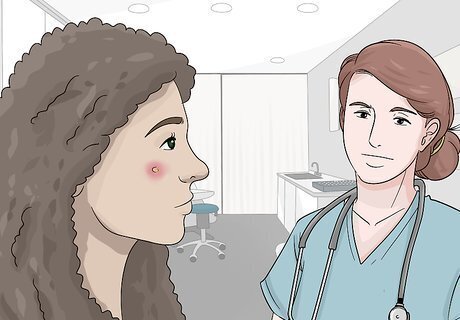
Talk to your doctor if the cyst appears to be infected. If you notice the cyst has become more swollen, redder, and feels warmer to the touch, it is likely infected. You should talk to a doctor and ask her for suggestions on how to treat the cyst at home. Keep the cyst covered and clean it with a warm compress until you can show it to your doctor. You should also contact your doctor if the cyst does not improve within 48 hours, despite home treatment. Do not squeeze or poke at the cyst and make sure you wash your hands before and after you apply any herbal remedies to the cyst.
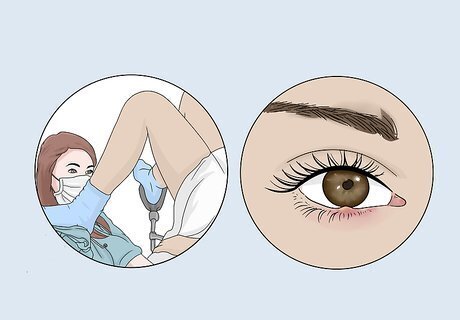
Go see a doctor if the cyst is on your eyelid or your genital area. These areas are very sensitive and you should avoid touching any cysts in these areas. Cyst in these areas can also get infected easily, so they are best treated by a doctor and not at home. Cyst on your eyelids could be a symptom of blepharitis, which should be treated by cleansing your eye lid and taking antibiotics prescribed by your doctor.
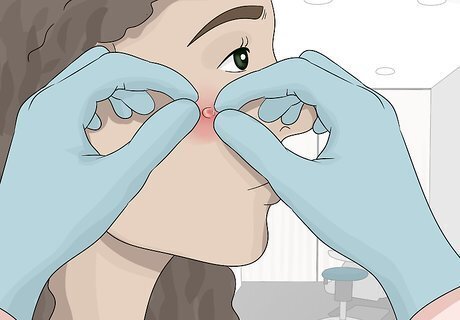
Let your doctor drain the cyst. Draining the cyst is a simple, quick procedure that can be done in your doctor’s office. Your doctor may first apply a local anesthetic to the area around the cyst and then make a small incision or cut in the cyst. For some cysts, your doctor may inject a corticosteroid into the cyst. She may then apply light pressure around the cyst to push the contents of the cyst out. The contents of the cyst may have a foul smell and appear yellowish or cheesy looking. Your doctor will remove the contents as well as the cyst walls so the cyst does not return. Depending on how deep the cyst is and how big it is, you may require stitches to help the area heal.


















Comments
0 comment